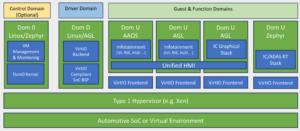Ryan Daws is a senior editor at TechForge Media with over a decade of experience in crafting compelling narratives and making complex topics accessible. His articles and interviews with industry leaders have earned him recognition as a key influencer by organisations like Onalytica. Under his leadership, publications have been praised by analyst firms such as Forrester for their excellence and performance. Connect with him on X (@gadget_ry) or Mastodon (@gadgetry@techhub.social)
The University of Bath has unveiled an IoT solution aimed at tackling urban flooding by combining smart cameras with AI. The software, called ‘AI on The River,’ identifies blockages in culverts by detecting debris and waste.
Culverts, critical for enabling waterways to flow under urban infrastructure, are fitted with trash screens to avert debris penetration. However, blockages at these screens can swiftly lead to flooding. By leveraging IoT capabilities, this system offers proactive monitoring and alerts.
The system is attracting global interest, particularly from nations like South Africa where data scarcity hampers similar technological developments.
Dr Andrew Barnes, a lecturer in Bath’s Department of Computer Science, explained: “We’ve developed the system to be flexible and scalable – it could be applied almost anywhere, giving it huge potential.”
Optimising urban flooding prevention with IoT and AI
The system underwent trials at a site in Cardiff, achieving nearly 90% accuracy in spotting potential obstructions. Traditionally, culverts have been manually monitored via CCTV, necessitating continuous human intervention.
Dr Barnes highlights the proactive nature of the IoT-enhanced model: “We’ve been able to develop an efficient model that can capture and identify blockages before they become a problem.”
Incorporating IoT with AI ensures local authorities can optimise resource allocation, focusing on genuine issues and enhancing immediate response capabilities. This facilitates safer, more efficient interventions without exposing teams to hazardous conditions.
Dr Thomas Kjeldsen from the Centre for Regenerative Design and Engineering points out: “Climate change means the risk of flooding is growing. This work opens the potential for lightweight, cost-efficient flood management systems in urbanised areas.”
With climate change increasing flood risks globally, this IoT-focused research marks a significant advancement in managing urban water challenges. The system’s flexibility paves the way for a sustainable, intelligent approach to flood forecasting, setting a new benchmark for IoT applications in infrastructure.
The study, ‘CCTV Image-based classification of blocked trash screens,’ is published in The Journal of Flood Risk Management and supported by the Engineering and Physical Sciences Research Council (EPSRC).
See also: Wireless devices and AI are transforming industrial automation
Want to learn about the IoT from industry leaders? Check out IoT Tech Expo taking place in Amsterdam, California, and London. The comprehensive event is co-located with other leading events including Cyber Security & Cloud Expo, AI & Big Data Expo, Intelligent Automation Conference, Edge Computing Expo, and Digital Transformation Week.
Explore other upcoming enterprise technology events and webinars powered by TechForge here.
Tags: ai, artificial intelligence, climate change, connected cameras, environment, flooding, IoT, smart cameras, university of bath



